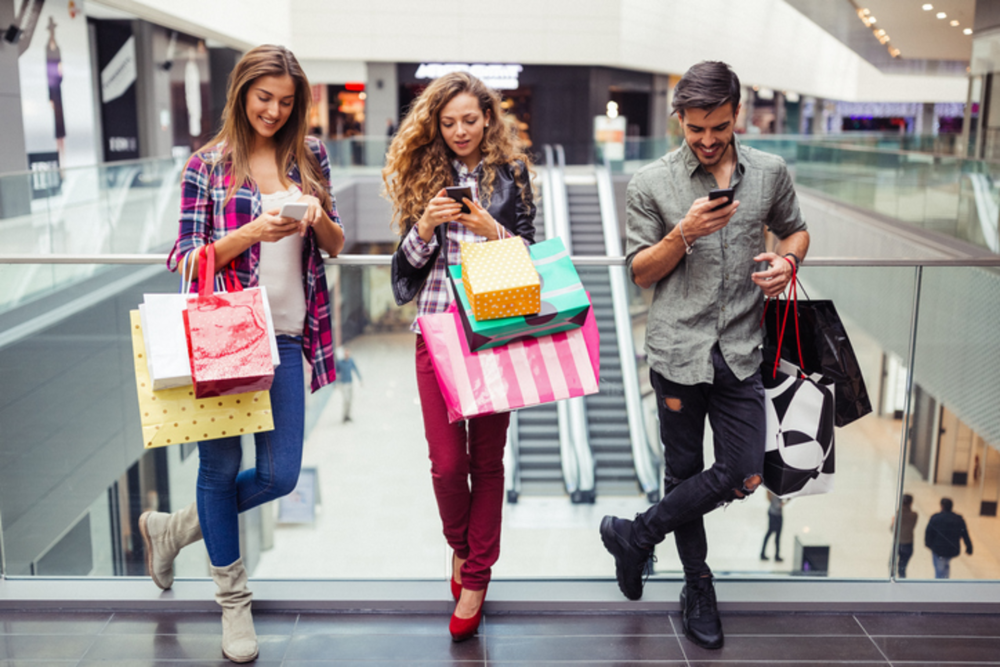Many honest commentators are trying to explain the role of retail tech — yes, like sales tech, that’s a thing — and many honest commentators are missing the point. The main point, at least.
Sure, retail tech can be deployed to connect customers with products and services; ensure those products and services are available when and where the customer wants to make a purchase; and ease the path from discovery, through conversion, to delivery. But that’s not why it’s exciting.
Take Richard Kestenbaum, writing in Forbes:
|
Technology is never going to be the point of most retail stores. The most important thing will always be the products and services offered for sale in the store. Technology can facilitate the connection between the product and the consumer and I don’t mean to minimize that, a retailer’s mission fails if that connection isn’t made. But the main event is always going to be whether the consumer and the product are right for each other.
|
Or Ian Hutchison, for Samsung Insights:
|
In-store sensors and beacon technology, for example, can send personalized behavioral and demographic data to a business’s cloud computing system, offering insight into who customers are. This data can educate product, layout and display strategies by providing information on consumer preferences, budgets and more as customers make multiple visits to a store.
|
Or James Paine, at Inc.com:
|
Digital marketers have long known that every extra step in the purchasing journey will reduce the number of people who actually go through with a purchase. In 2018, expect to see more retailers adopting this concept by making it as easy as possible for people to purchase from them, whether that’s by streamlining mobile applications or whether it’s by providing self-service checkouts so that shoppers in a hurry can pay for their product and move on. |
No.
Or rather, yes, I agree with all the foregoing, but it doesn’t get to the heart of why retail tech is exciting, why it’s significant and what it can do. It’s the experience, stupid.
Let’s check the boxes of what retail tech should, and hopefully soon will, make possible:
- Personalized inventory management; ensuring that products and services are available when and where customers want to purchase them
- Location awareness; knowing not only where customers are (inside and outside the store), but where they’ve been and where they’re headed
- A personalized in-store experience; making recommendations real by guiding customers’ footsteps, and loading on the offers and discounts
- Seamless check-out (or no check-out) or delivery options.
Beacons, sensors, the IoT, mobile devices — the network to support all this is almost there. The thing is, it’s all too obvious. The real winners are going to be those retailers who are ready to go a step beyond making it easy for customers to discover and purchase products and services. The true future of retail tech lies in orchestrating retail experiences.
Amazon is a trend-setter here, but by no means the only one. AmazonBasics underlines something which has become increasingly clear over the last three to five years. It’s not that products and services don’t matter — it’s that they’re not the point of differentiation any more. But don’t make the mistake of thinking that AmazonBasics is just re-visiting the old concept of generic labeling, where customers got value by buying what was essentially an unbranded product. Generically labeled cans of soup could stand for experience-free retail. AmazonBasics is all about the experience: the experience, in this case, of being the kind of customer who shops by speaking to Alexa.
That’s key: It’s not just about speed and convenience; it’s about method of shopping as lifestyle statement.
Similarly with AmazonGo. Assuming a basic standard of value and quality, what matters is not what’s on the shelves. What matters is the way the entire experience — from apps to LimeBikes — becomes part of a customer’s self-expression.
Maybe Amazon is just too obvious. Other examples of products and services which are valued as an intrinsic part of lifestyle and self-expression, not just for what they are, are innumerable — from just about any Apple device, to the Tesla, to Spotify. The challenge is to orchestrate retail experiences — very much including in-store experiences — which go beyond ease and convenience, and allow customers to make a statement by using them. That’s the winning revolution in retail.








